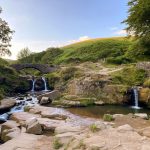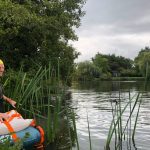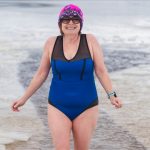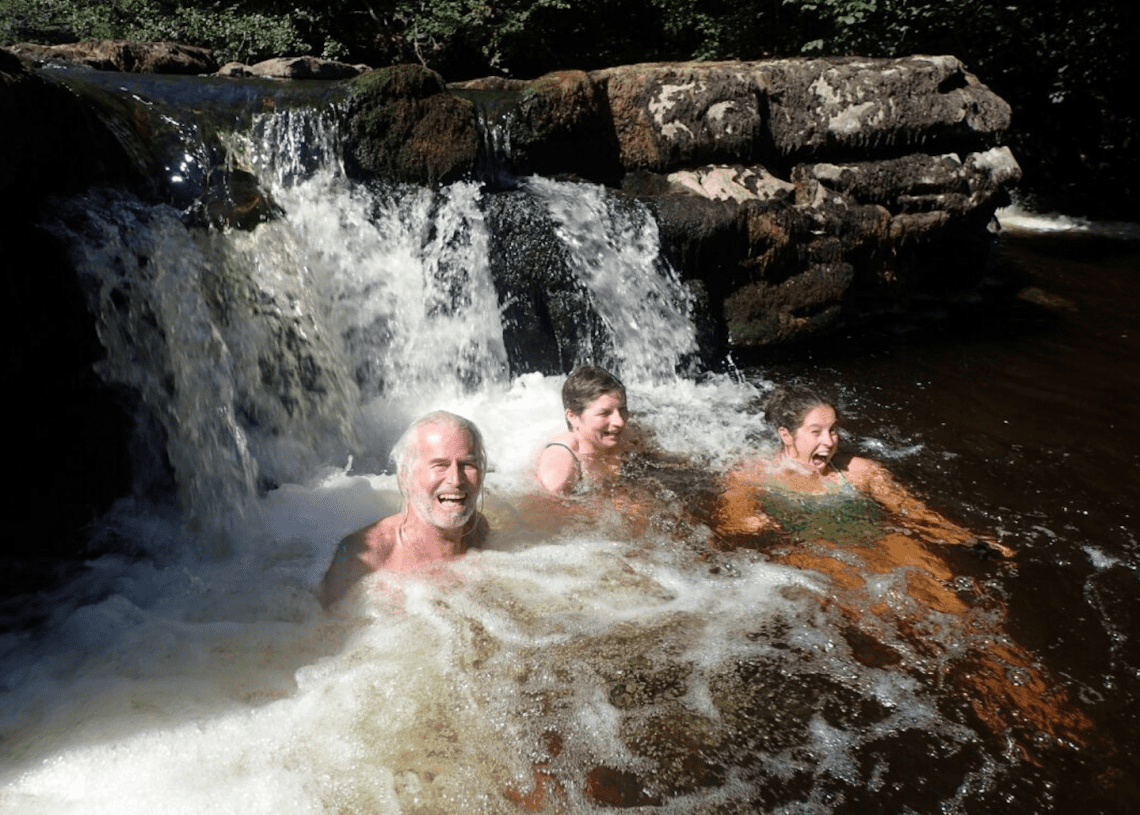
Fossing in Yorkshire
Susanne Masters seeks rivers and waterfalls on her wild swimming holiday in the Yorkshire Dales
Splashing in a waterfall while in the Yorkshire Dales seems obligatory, and doing this you can’t help but connect with the Vikings as here, waterfalls are called ‘force’ or ‘foss’. Force is derived from foss and fors, which mean waterfall in Norwegian and Old Norse.
Our Viking ancestors left traces of their culture in Britain. While physical remnants of their lives here are limited, language has longevity and we speak their words in place names.
Between 793 CE and 1066 CE the Vikings, or Norsemen, affiliated with Denmark, Norway and Sweden brought the Viking Era to Britain. Raiders who pillaged monasteries and churches, Vikings were also farmers who settled here and brought rights to common people living under Danish law that exceeded rights commoners had under Anglo-Saxon law.
Yorkshire was central to the Viking realm within Britain; they established a mercantile hub in York and farmed river valleys of Yorkshire. Although Vikings reached our shores by sea, their ability to sail up rivers helped them to invade and then settle here.
Swimming at Catrigg Force
We began our exploration of the Yorkshire Dales with a dip in Catrigg Force. Following signs from the car park in Stainforth we walked through the village and then followed a steep track up to a clutch of trees. We heard the sound of falling water and laughter.
Following a well trod path and enticing sounds we came to a small pool at the foot of a gentle cascade of water. Shards of sunlight fell on the water through the surrounding green canopy of leaves. It was beautiful, as well as cool relief from both heatwave and steep walk to reach it. Perhaps, we wondered, this might be the best dip in Dales. Could the rest of the weekend offer anything more or had our experience peaked?
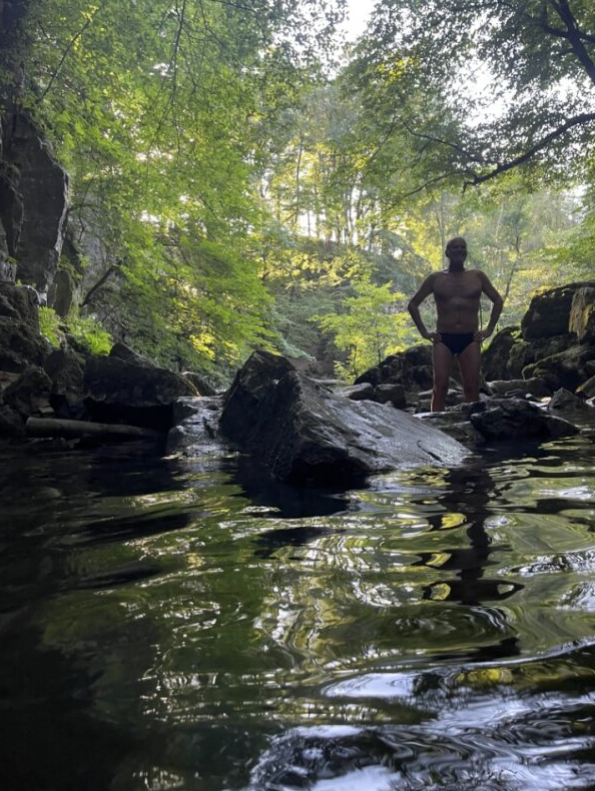
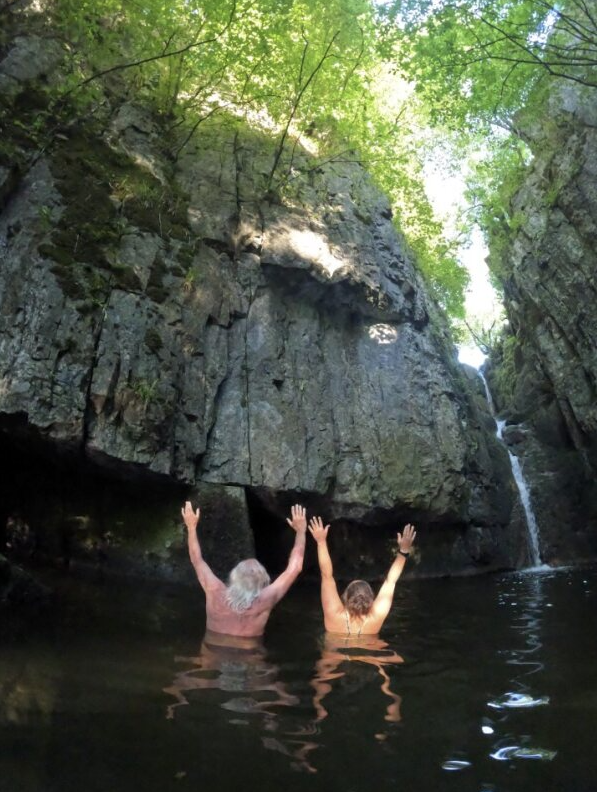
Only half a mile from the car park in the other direction was Stainforth Force. Checking the location on Google Maps we could see that it was ‘busier than usual’. Litter on the last stretch of road was a portent.
Reaching the River Ribble we could hear the splash landing of people jumping from height into water, and a cacophony of shouting. There was no need to walk down to Stainforth Force to decide that we would not swim there. Though we were almost tempted by the shallow river pool upstream of the waterfall.
Onwards to Malham
Moving on to Malham we parked on a road where a milk churn was placed with a sign asking for parking donations.
Following a wide and flat path across meadows, we reached the edge of a wood. Janet’s Foss was a small cascade of water over rock with a leafy backdrop. We chose not to swim in the crowded pool in which the water was murky with churned up silt. We walked onwards following signs towards Goredale Scar.
Although over a mile from the car park there were many cars parked along the road close to
Janet’s Foss. Google Maps could not have warned us that it was busier than usual as there was no phone reception. But we learned that proximity to a road brings a similar crowd to a car park. Throughout the weekend we saw parking that was at best creative and at worst a hazard.
Along the path that followed Goredale Beck the dusk air was fragrant. Meadowsweet was thriving in damp grassland next to the beck, its creamy flowers glowing in the fading light. This was a familiar plant to Vikings who used it for hay and as a flavour in alcoholic drinks. Beck is another unfamiliar word for southerners. Like force or foss it was brought to us by Vikings, from the Old Norse word bekkr meaning brook.
As we walked into the amphitheatre of limestone formed by Goredale Scar the sound of moving water was magnified.
While there is a footpath towards Malham Tarn from Goredale Beck the National Trust asks that people don’t follow it up beyond the waterfall. Limestone precipitates out of Goredale Beck’s water and is deposited as soft tufa, which is vulnerable to damage.
We stopped at the lower level and cooled off with a splash of water. As bats began to fly we walked back down to Malham.
A swim in the River Wharfe
Staying in Burnsall we were well positioned to enjoy the Wharfe River first thing in the morning. Wharfedale, the long valley dominated by the River Wharfe has wide riverside meadows. Soil quality was an important characteristic to Vikings settling in Britain as they sought land for farming, and low ground was preferred to uplands. So the Yorkshire Dales were both appealing to Vikings and named by them as the word dale stems from the Old Norse dalur, meaning valley.
Before breakfast we walked upstream to Loup Scar where a river pool was cut into limestone by the Wharfe. Wearing goggles to enjoy views of sculpted rocks through dark water we circled the pool and swam against the upstream current where the river was narrow. Walking back along the footpath we kept hearing loud splashes and seeing ripples. These were caused by trout rising to the surface to catch insects.
Along the banks late summer was full of colour with stretches of pink rosebay willowherb, yellow golden rod, and pale spikes of apple mint.
Swimming at Redmire Force
Having realised how popular many of the well known swimming spots would be we started the day’s excursion with a swim in Redmire Force. We parked at Fairhurst’s at Berry’s Farm in Swinithwaite, where we were pointed in the right direction.
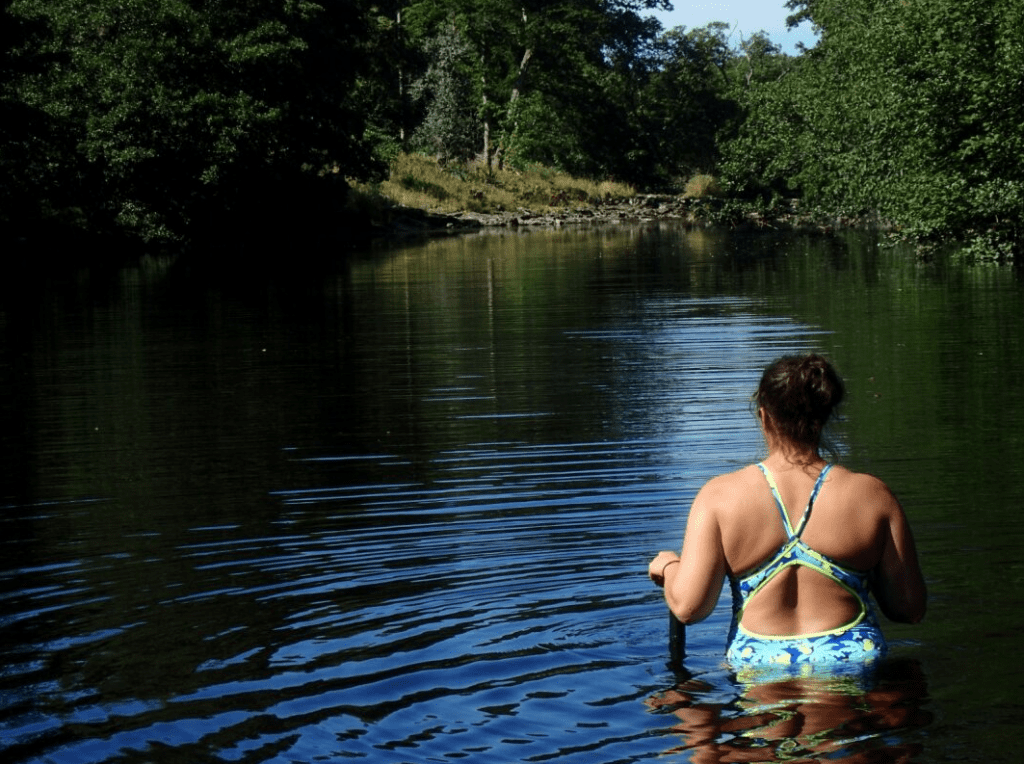
While we shared river pools and waterfalls with people the River Ure was wide and it didn’t feel crowded. First we swam in a river pool that seemed Olympic sized. Lower down we sat under tumbles of water that massaged our backs and sent us bobbing across small river pools. Bright green willow moss cushioned some of the stones in the riverbed. We could see how much higher water flow usually was by noting the extent of dried out patches of willow moss above the water level. After swimming we refuelled ourselves with food and drinks back at Fairhurst’s at Berry Farm.
We had planned in advance where to swim on a Saturday afternoon, in school holidays, during a heatwave because we wanted to avoid crowds. Using Ordnance Survey maps we found a likely spot accessible via public land and footpaths that was not near a road. Without signposts or heavy foot traffic we occasionally veered off the path. In the end we reached our destination: a waterfall pool. Having used map-reading skills, and walked several miles, it was a worthy reward.
Secret swimming spot
In general I am in favour of sharing locations. In this case our choice of swim spot was customised to how far and steep we were prepared to walk and not an obvious place to find. I don’t think naming our swimspot is helpful. Rather, I recommend using Ordnance Survey maps to find your own secret waterfall.
After dinner we were still inclined towards another swim but not keen to venture far or put our hiking boots back on. So, in flip-flops we walked upstream along the footpath to a sandy beach in the Wharfe in between Burnsall and Loup Scar. Stepping down a gentle slope of sand was a gentle launch into dark water that reflected the last light in the sky. While we swam heads-up breaststroke bats flew over the long river pool.
Having used the Yorkshire Dales as a halfway point for getting together from the Scottish Highlands and England’s south coast we all needed to start the journey home after breakfast.
One last swim
Ghaistrill’s Strid is a well-known section of the Wharfe that squeezes between submerged limestone canyons. At 7 in the morning we were the only people in the water.
Narrow sections where current was fast were almost an endless pool to practise front crawl on the spot. We saw trout skimming below us and watched them at the base of little cascades where the trout in turn were watching for prey.
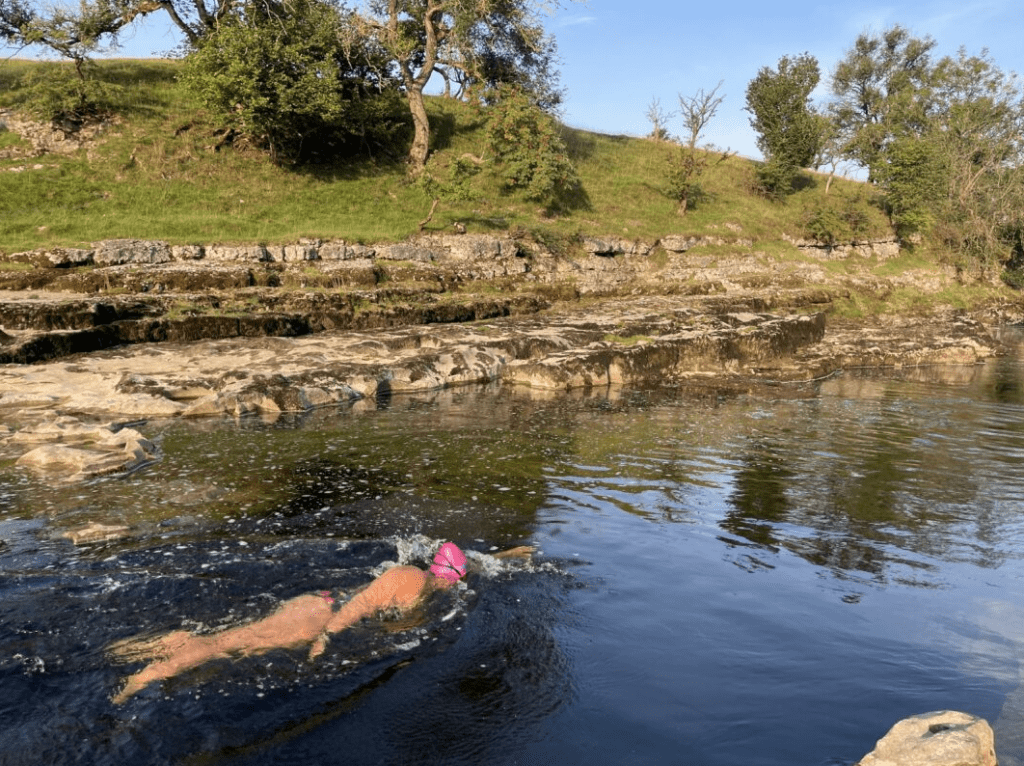
Clouds of minnows flitted in the water and settled to tap our feet if we stopped swimming. Beneath us we could see a couple of crayfish, but wary of disturbing them we didn’t look close enough to see if they were rare white-clawed crayfish or introduced signal crayfish.
Walking back along the path we saw kingfishers and a group of goosander. Early in the morning before gaggles of visitors and peak heat for the day wildlife was easy to spot.
Within a short time never more than 45 minutes from our accommodation we found a variety of waterfalls and river pools. Redmire Force was like a splash park for adults. Created by water falling from height all of the forces offered beautiful views. Even in close proximity on the River Wharfe different sections offered different experiences. We would have liked to spend more time exploring the Yorkshire Dales, but a weekend there felt as if we had slowed time. Being immersed in the landscape was more refreshing than sleep.
Planning your swimming holiday in Yorkshire
Waterflow
Heavy rainfall in headwater areas can rapidly turn becks and rivers into dangerous torrents that are not suitable for swimming. Keep track of rainfall and be prepared to change your plans if conditions become unsuited to swimming.
Parking
We saw cars parked in hazardous ways in crowded places. If there isn’t a way to park reasonably it’s a prompt to try a different swimming spot.
Dogs
Cows disturbed by dogs can be a danger to people if they stampede. It is common for perfectly reasonable dogs to be driven wild by the sight of fluffy sheep. Sheep that are chased are stressed by the experience and can lose lambs, and be driven into scrambles and jumps that cause them injuries. Farmers have the right to shoot a dog that is worrying their livestock. If you bring a dog with you keep them on a lead in areas with livestock.
Accommodation
We stayed at the Red Lion in Burnsall in an apartment that sleeps up to six. It was very swimmer friendly with generous and excellent breakfast, convenience of a pub onsite as well as our own kitchen, and we could walk upstream or downstream to swimming spots.
This article is from the September 2022 issue of Outdoor Swimmer Magazine.
Explore more places to wild swim






